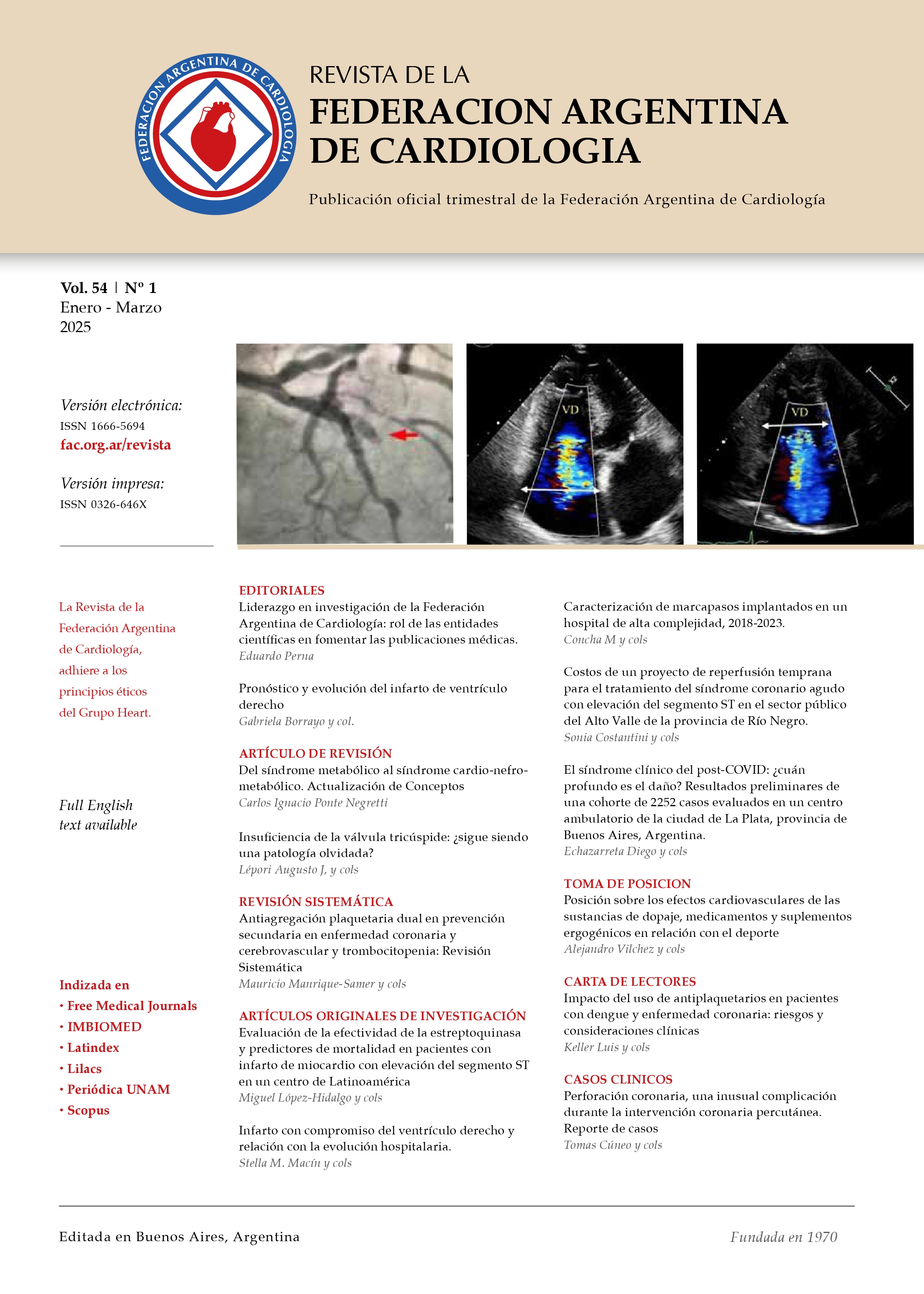Post-COVID clinical syndrome: how deep is the damage?
Preliminary results of a cohort of 2252 cases evaluated in an outpatient center in the city of La Plata, Province of Buenos Aires, Argentina
Keywords:
DLCO, Post-COVID-19, Long-COVID-19, Neurocognition, CardiovascularAbstract
Objectives: The objective of this research was to explore the initial and delayed symptoms after SARSCoV-2 infection, describe its impact and quantify the residual damage. Materials and methods: from July 1, 2020 to September 1, 2022, patients who had presented a positive result in a test for COVID-19 or a diagnosis under epidemiological criteria were included in an outpatient care center in the city of La Plata, evaluating risk factors, symptoms of their disease, persistent symptoms and findings in auxiliary cardiovascular, respiratory and neurocognitive tests. Results: 2252 patients with an average age of 42.21 years (SD: 14.17, range: 17-89) were evaluated. Patients with post-COVID-19 clinical syndrome were 1090 (48.4%), while 1162 (51.6%) had no symptoms. Among the post-COVID-19 symptoms, fatigue, dyspnea and cough were the most frequent, described in 28.2%, 21.8% and 14.4% respectively; while memory failure and concentration failure were reported in 10.2% of the patients questioned. An evaluation of the respiratory, cardiovascular and neurological test performance impact (Montreal Test, PHQ-9 and GAD-7) was also carried out. Patients with persistent symptoms were predominantly female, with an older average age and a higher smoking rate. Conclusions: no significant differences were observed in the cardiovascular or respiratory aspects between those who presented post-COVID-19 syndrome and those who did not. There was also no worse performance in neurocognitive tests when assessing post-COVID-19 symptoms compared to those who did not suffer from it; although when performing a subgroup analysis adjusted for age, those over 50 years of age showed worse performance.



